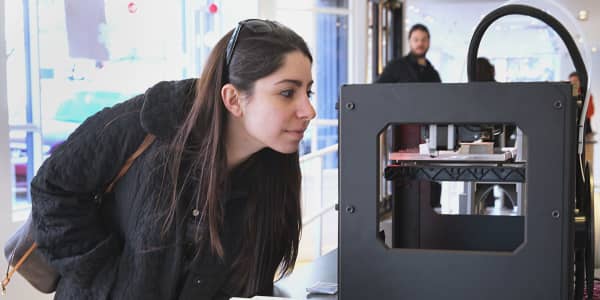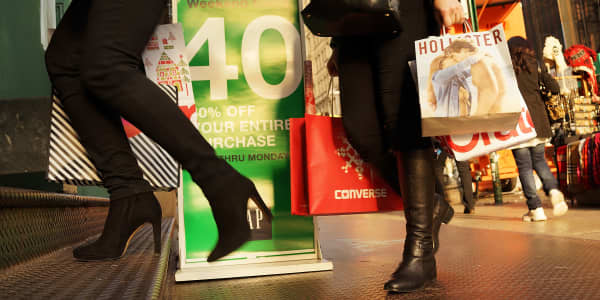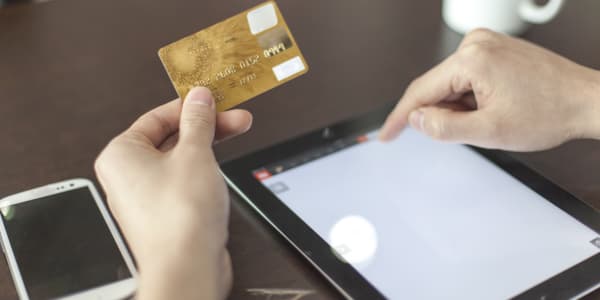Crowded malls. The eternal search for a halfway decent parking spot. Waiting for hours—only to see the gift your son or daughter desperately wants sell out right before you get to the front of the line. Who needs this version of the holiday spirit?
Imagine if you could buy yourself a gift that makes whatever you want for others—it's not the ingredients for a home-baked fruitcake to send to friends and relatives, either. 3-D printing companies like MakerBot are making a bet that you won't need Amazon.com, a bricks-and-mortar retail giant or a bunch of Santa's elves in the North Pole workshop to cover everyone naughty and nice. A holiday trend of the future will be stockings stuffed and trees underlined with your own 3-D printed designs.
MakerBot, which opened its first retail store in Manhattan last year, has opened two more this holiday season—in Boston and Greenwich, Conn.
"[Our buyers] have traditionally been a lot of early adopters, but now it's shifting," said Jenifer Howard, MakerBot spokeswoman. "You can make incredible pieces of art," she said. Or you can make a practical stocking stuffer—an iPhone case, for example. And for gifts that are better to buy yourself than to rely on someone else to select for you—say, a husband—3-D printing can take the place of a gift card. "You can even make clothing or print yourself a pair of high-heeled shoes," Howard said.
(Read more: Looking like an iPad Christmas)
Printing out gifts at home may sound like a perfect way to escape some of the holiday bustle, but it does present some obstacles. First off, there's the etiquette question.
The Miss Manners of the MakerBot era
Two years ago, when Groupon was in its heyday, some shoppers would present the vouchers as gifts and be a bit confused when the recipient didn't do cartwheels. Will 3-D gifts be viewed as the presents of cheapskates as well?
Diane Gottsman, national etiquette expert and owner of the Protocol School of Texas, said she thinks 3-D printed gifts pass the "cheapskate test."
"It's art," Gottsman said. "I think it's different than someone giving a discount coupon. [With Groupon] it wasn't only a gift certificate but a discounted one. So that tended to send the message that it's cheap. But with these machines, you can actually make a gift and it's something you thought someone would want. It's very similar to a craft item someone would make—very similar to a DIY project."
3-D printing is a slow, more expensive, lower-quality way of making something you can buy elsewhere, but it's certainly more fun.Nick AllenProduct designer and president of 3DPRINTUK
Gottsman raised a more critical question than any social faux pas: Can you actually make something using a 3-D printer that someone would want?
The marketing of these machines make them look like they operate with the ease and genius of a Star Trek food replicator or holodeck: Just tell it what you want, and—presto, magic!—your idea's made perfectly real. 3-D printing experts say the reality is quite different.
(Read more: Must-have video games this holiday season)
"3-D printers are brilliant for getting ideas out from your head and into your hand, and they're good for making relatively elementary items for your house," said Nick Allen, a product designer and president of 3DPRINTUK, a London-based 3-D printing service. "But when you come down to what is portrayed in the media that you just click, print and your product arrives, that's really not possible."
An underappreciated problem is that to get a high-quality product, you need to have a CAD-designed blueprint, and most people aren't proficient in that specialized trade. There is something of a workaround for that. Websites such as Thingaverse, GrabCAD and Google's 3-D Warehouse offer free templates. But if you're expecting an exact duplicate of a retail item, forget it.
"Companies are never going to release their IP as downloadable designs," Allen said. "First, where's the financial incentive to do it? Second, there's a liability issue."
3-D scanners can be used, but Allen said the quality of those products often suffers, something Howard cedes as well. "It's like photocopying something; you do lose some resolution," the MakerBot spokeswoman said. "It's really great for organic form factors, though. You could take a beautiful seashell or gargoyle and scan that."
(Read more: 6 wearable tech gift ideas)
Printing money, for 3-D print companies
Another factor is price: 3-D printing isn't cheap. Prices on the systems typically range from $2,200 to more than $3,000. If you want a 3-D scanner with your MakerBot (Howard referred to it as the washer/dryer combination), that will run you another $1,400.
Raw materials aren't exactly low cost, either. One kilogram of PLA filament, which many 3-D printers use, can cost $35 to $45. And the bigger the object you're printing, the faster that will go. "There's no economy of scale," Allen said.
The good news, if you're still determined to get a 3-D printer and start making your own gifts, is that you're not alone. MakerBot's Howard said the company believes this is the start of a big change in consumer behavior. (It's focusing on that exact angle in ads that end with the tagline "The gift that keeps on making.")
"It's going along the lines of the computer and 2-D printers," Howard said. "Twenty or 30 years ago you'd say, 'I don't need a computer; I have a pocket calculator.' Now you carry a computer in your pocket."
Even though the reality of 3-D printers is different from the fantasy, the products they produce will still make an impression, Allen said—on both the gift's creator and the recipient.
"3-D printing is a slow, more expensive, lower-quality way of making something you can buy elsewhere," Allen said, "but it's certainly more fun."
—By Chris Morris, Special to CNBC.com




